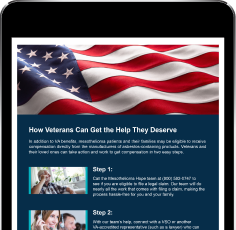About U.S. Navy Auxiliary Ships
Auxiliary ships are the United States Navy workhorses. Auxiliaries provide the necessary logistical support to keep a naval fleet operational whether at peace or in war.
As long as the U.S. has possessed a Navy, they’ve used auxiliary ships to maintain it. The Navy simply wouldn’t be able to function if it weren’t for its Military Sealift Command and Combat Support Ship segment.
Auxiliary tenders depend on the fleet’s big guns to do the defensive work while they quietly go about fueling, feeding, repairing and towing other Navy combat vessels.
These are some of the roles the United States Navy auxiliary ships assume:
- Hospital and medical aid
- Floating barracks
- Food, supplies and water stores
- Ammunition and explosives containment
- Repair and maintenance functions
- Oilers and takers
- Salvage duties
- Research and technology development
- Training and education
- Surveys
- Tug and towing
- Crane and heavy lifting services
- Cargo transit and storage
- Submarine tenders
- Search and rescue operations
- Seaplane retrieval
- Torpedo testing and reclaim
- Diving and underwater recovery
During World War II, the U.S. Navy had hundreds of auxiliary ships. They were massed produced to serve and protect foreign battle fleets.
War-time production required shipbuilders to use materials they were familiar with and depend on. The main material used in building auxiliary ships was asbestos.
Asbestos Use in Navy Auxiliary Ships
Asbestos products seemed the logical choice for most shipbuilding applications.
Asbestos was fireproof, provided excellent insulation properties and was non-corrosive. That was perfect for saltwater ships. ACM products were cheap to produce and raw materials were easy to get.
As well, asbestos was chemically stable and apparently safe to work with. At least shipbuilders thought so at the time.
By the 1980s, ACM was no longer seen as user-friendly. Asbestos was a proven carcinogen and responsible for making thousands of people sick each year.
U.S. Navy veterans are at greater risk of mesothelioma than any other former military members.
Types Asbestos-Containing Products Used in Auxiliary Ships
Over 300 different ACM products were used in manufacturing Navy ships.
The most common ACM products included:
- Engine and boiler liners and protective shields
- Soundproofing and fire-stopping
- Spray-on, block, wrap and loose-fill insulation
- Electrical cable and wire coatings
- Ropes and mooring lines
- Fire and welding protective clothing
- Dry cement powder and mortar
- Paint, caulking, and adhesives
- Gaskets, valves, and packings
- Friction plates
- Fuel line and steam pipe protection
- Floor and ceiling tiles
Nearly every auxiliary vessel built during the peak asbestos-use period utilized these products.
High Asbestos-Risk Occupations on Auxiliary Ships
Every United States Navy veteran who served on an auxiliary ship built between World War II and 1980 was exposed to airborne asbestos fibers.
That said, those at highest risk were veterans who directly worked with asbestos-based products or served below deck where confined spaces had poor ventilation.
High-risk Navy occupations included:
- Boilermakers
- Engine room tenders
- Electricians
- Plumbers
- Pipefitters
- Firefighters
- Welders
- Hull maintenance technicians
- Painters
- Machinists
- Mechanics
- Millwrights
It was impossible to escape asbestos contamination if a veteran worked in these roles.
Help for Navy Veterans with Mesothelioma
Many U.S. Navy veterans who served aboard asbestos-laden auxiliary vessels had no idea of the danger they were placed in. Mesothelioma has an extremely long latency period.
Twenty to 50 years can pass from a veteran’s last exposure until mesothelioma symptoms appear.
By then, it’s too late to prevent the disease. All that most mesothelioma patients can do is get legal help to help pay for the top life-extending treatment options.
Our team can connect you to important medical and legal resources right now.
Get our free mesothelioma guide today.



